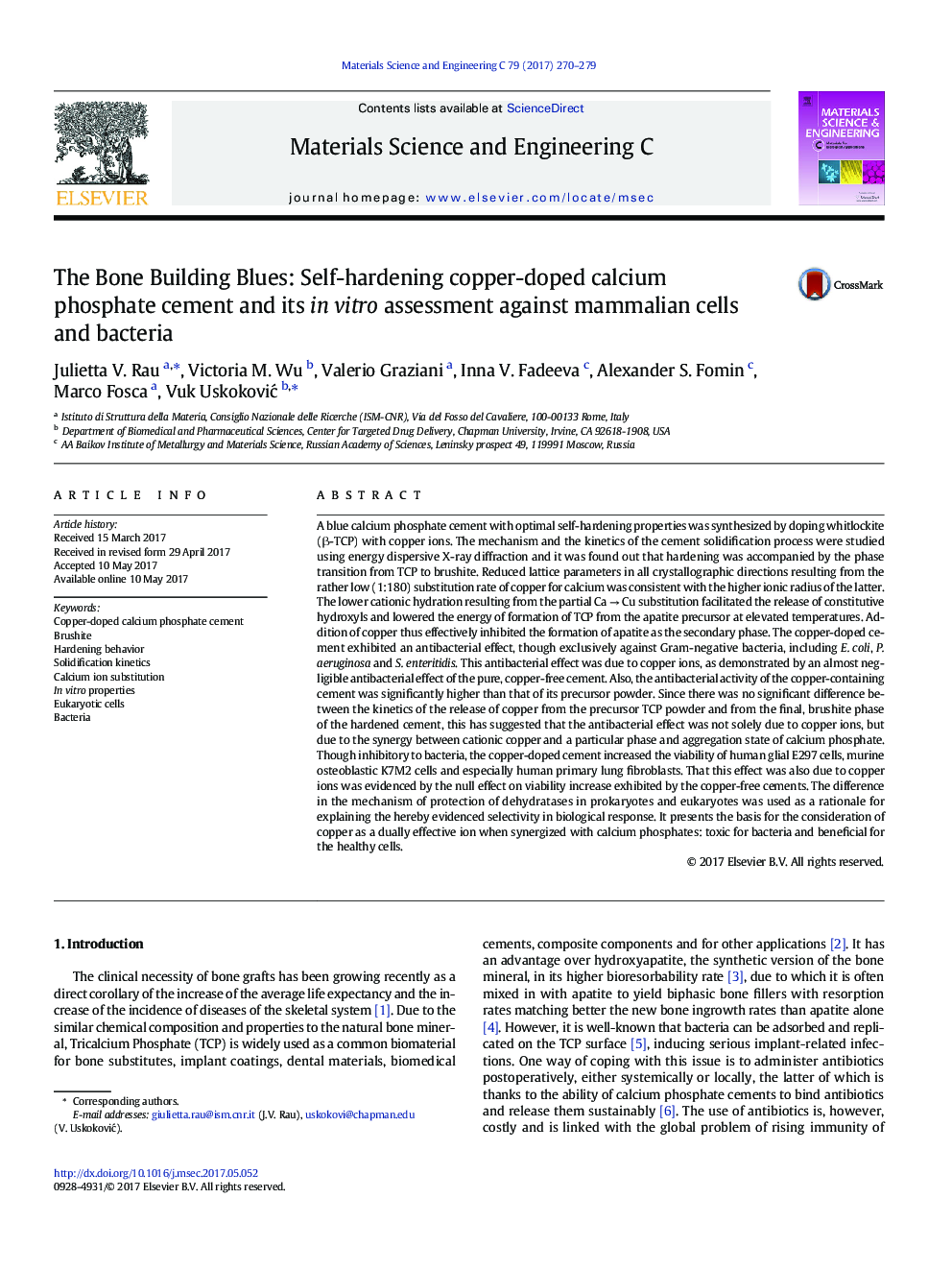| کد مقاله | کد نشریه | سال انتشار | مقاله انگلیسی | نسخه تمام متن |
|---|---|---|---|---|
| 5434729 | 1509142 | 2017 | 10 صفحه PDF | دانلود رایگان |
- A blue, copper-doped CaP cement with clinically optimal TCP â DCPA setting kinetics
- Ca â Cu substitution reduces lattice parameters in all crystallographic directions.
- The cement is antibacterial, though exclusively against Gram-negative bacteria.
- Simultaneously, the cement increases the viability of a range of human cell lines.
- More proliferative for primary than cancer cells, suggesting anti-tumorigenicity
A blue calcium phosphate cement with optimal self-hardening properties was synthesized by doping whitlockite (β-TCP) with copper ions. The mechanism and the kinetics of the cement solidification process were studied using energy dispersive X-ray diffraction and it was found out that hardening was accompanied by the phase transition from TCP to brushite. Reduced lattice parameters in all crystallographic directions resulting from the rather low (1:180) substitution rate of copper for calcium was consistent with the higher ionic radius of the latter. The lower cationic hydration resulting from the partial Ca â Cu substitution facilitated the release of constitutive hydroxyls and lowered the energy of formation of TCP from the apatite precursor at elevated temperatures. Addition of copper thus effectively inhibited the formation of apatite as the secondary phase. The copper-doped cement exhibited an antibacterial effect, though exclusively against Gram-negative bacteria, including E. coli, P. aeruginosa and S. enteritidis. This antibacterial effect was due to copper ions, as demonstrated by an almost negligible antibacterial effect of the pure, copper-free cement. Also, the antibacterial activity of the copper-containing cement was significantly higher than that of its precursor powder. Since there was no significant difference between the kinetics of the release of copper from the precursor TCP powder and from the final, brushite phase of the hardened cement, this has suggested that the antibacterial effect was not solely due to copper ions, but due to the synergy between cationic copper and a particular phase and aggregation state of calcium phosphate. Though inhibitory to bacteria, the copper-doped cement increased the viability of human glial E297 cells, murine osteoblastic K7M2 cells and especially human primary lung fibroblasts. That this effect was also due to copper ions was evidenced by the null effect on viability increase exhibited by the copper-free cements. The difference in the mechanism of protection of dehydratases in prokaryotes and eukaryotes was used as a rationale for explaining the hereby evidenced selectivity in biological response. It presents the basis for the consideration of copper as a dually effective ion when synergized with calcium phosphates: toxic for bacteria and beneficial for the healthy cells.
Journal: Materials Science and Engineering: C - Volume 79, 1 October 2017, Pages 270-279
